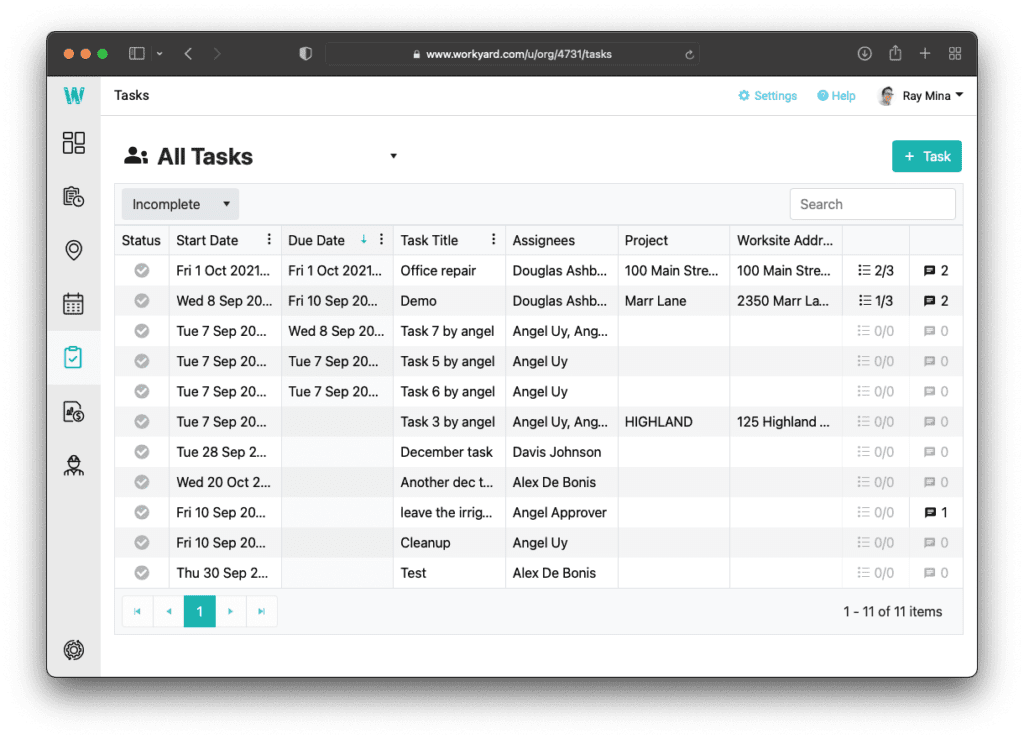Home Construction Management How To Monitor Progress On A Construction Project
How to Monitor Progress on a Construction Project
As a construction company owner or supervisor, you need to know how to monitor progress on a construction project accurately and effectively.

Have you ever had a construction project just get away from you? Maybe you took on a few too many jobs. Or maybe you just had complications with scheduling. Either way, it’s one of the perils of being a small contractor.
When you aren’t able to monitor the progress of your construction projects, you can easily fall behind. And that leads to unhappy customers.
Let’s look at how to monitor progress on a construction project—without feeling like you’re wasting your time.
How Do You Track the Progress of a Construction Project?
Construction is about transparent processes and clear communication. Construction progress tracking is similar. At the beginning of a project, take the time to develop a clear idea of the project’s flow. Document everything you need to do to complete the project.
Once you have a framework in place, tracking the construction project’s progress is just a matter of accurate and timely reporting.
Step One: Establish Milestones and Tasks
Your first step is to break your project down into major milestones—and break those major milestones down into tasks. Breaking a large project into smaller pieces makes the entire project more manageable. And, if a particular milestone is taking much longer than you thought it would, you’ll already know that it’s likely the project will be delayed.
Workyard provides a complete, app-driven scheduling system. Employees can log into the app to check on their hours and assigned locations, while you can manage multiple employees, worksites, and projects with ease.
For more complex projects, you may need a scheduling strategy. There are five major strategies for monitoring the progress of a construction project:
- Network Diagrams
- Critical Path Method (CPM)
- Gantt Charts
- Program Evaluation Review Technique (PERT)
- Work Breakdown Structure (WBS)
These strategies provide a framework through which you can lay out the milestones and tasks of each project. But most smaller contractors can get by with a flowchart or a spreadsheet. It all depends on the project’s complexity and how many projects you’re managing.
Step Two: Check on Progress at Intervals
Schedule time to check progress at each worksite. While it’s time out of your day, it’s time well spent. Checking in often will help you identify potential problems early—and the earlier you catch a problem, the easier it will be to fix.
But not everyone has the time to visit every worksite physically. Workyard’s GPS technology provides a bird’s eye view of where your employees are. Remotely monitor your employees’ progress—and check on their tasks—from anywhere.
Step Three: Plan for Issues and Delays
No matter how well you plan, there will always be some problems. Keep lines of communication open with the client so they know what to expect—and be prepared to address any issues proactively.
Workyard’s task management features make it easy to document and track problems as they arise. Within seconds, you can pull up a report and see which tasks are behind schedule.

The more you do to track your progress, the more predictable your projects will become. But you also don’t want to spend all your time following up with employees and tracking down progress. Not only do you need to know how to track the progress of a construction project, but you need to know how to do so effectively.
Tips for Efficient Construction Project Progress Tracking
Save time by tracking progress more efficiently. Consider the following tips and best practices:
- Lean on your technology. Keep your tasks and milestones in an app and check in on employees remotely. Technology is there to make you more productive.
- Communicate with your team. Don’t just make sure everyone knows what’s expected of them, create a communication culture. You don’t want team members afraid to report delays because they think it will cause issues for them.
- Hold regular meetings. Find out from your supervisors and team members where projects are and whether they need anything to complete them.
There are only so many hours in the day. If you spend too much time tracking construction progress, that can make it difficult for your business to scale.
FAQs
What Is Construction Progress Monitoring?
Construction progress monitoring is the process of tracking the milestones and tasks associated with a construction project. At the same time, a supervisor may also ensure that the project has been developed up to the required quality standards.
How Often Should You Monitor Progress?
You should monitor progress as often as is necessary to keep the project on track. For some projects, that might be daily, but for others, it might be weekly.
What Tools Can I Use To Monitor Progress?
There are various tools you can use to monitor progress, including project management software, task tracking software, and construction accounting software. Workyard is a simple, easy-to-use workforce management app that will help you track construction progress and hours.
Still Wondering How To Monitor Progress on a Construction Project? Workyard Can Help
If you’re looking for a construction progress tracking solution that will save you time and help you manage your projects more efficiently, consider looking at Workyard.
Workyard is a GPS-powered workforce management app that helps business owners and project managers track employee hours, schedule shifts, and monitor job site progress from anywhere. With Workyard, you can:
- Track employee hours and job site progress
- Get real-time insights into your construction projects
- Manage your project budget more effectively
- Easily schedule your team members
